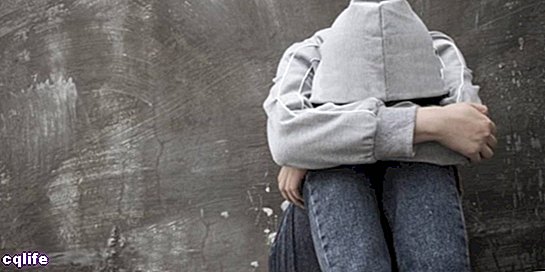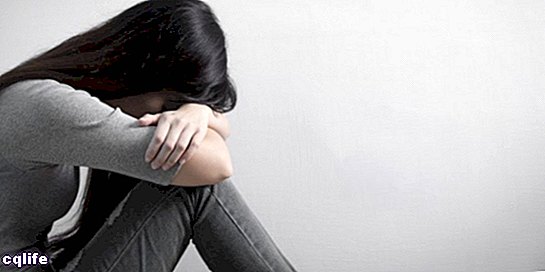- What is depression?
- Causes of depression
- Symptoms of depression
- Endogenous depression
- Chronic depression
- Postpartum depression
We explain what depression is, the types that exist and its main causes. Also, its symptoms and what is chronic depression.

What is depression?
Depression is a temporary or permanent mental illness characterized by deep feelings of despondency, unhappiness and guilt, as well as an inability to enjoy and, often, episodes of anxiety. It can occur in response to an external stimulus and be temporary, but leave a deep mark on the individual; or it can become a disorder and become chronic, in which case it requires psychiatric treatment.
Actually, depression is a set of emotional and psychic ailments, that can have diverse causes of biological type (hormonal, neurochemical, genetic) social (experiential, loving) and / or psychological (emotional, traumatic). Any age is susceptible to suffering from it, although it is usually more common in women than in men and usually manifests in young adults.
The main types of depression are:
- Major depressive disorder. It appears only once, without being associated with traumatic events or consumption of substances psychotropic, and has a particular impact on the life of the patient. It is usually an intense emotional event.
- Dysthymic disorder. Also known as dysthymia, it is believed to be of genetic-hereditary origin and consists of more widely spaced, mild but prolonged episodes of depression.
- Cyclothymic disorder Also called cyclothymia, it is considered a mild form of bipolar disorder, as it consists of moderate episodes of depression that alternate with periods of hypomania (high mood and energy).
- Seasonal affective disorder. It is a type of moderate depression that is usually associated with certain periods of the year, such as certain weather seasons.
- Bipolar depression Part of bipolar disorder or bipolarity, it is a mental illness that causes the patient to oscillate between intense periods of mania (euphoria, hypersexuality, irritability) and others of depression (sadness, apathy, disinterest) with little or no transition time between one and other.
Treatment of this disease can vary from case to case, but often involves treatment with antidepressants and / or anxiolytics, as well as talk therapy or psychotherapy. In some cases this can mean long and constant work.
Causes of depression

Depression has a multifactorial origin. Some factors associated with its appearance are:
- Particularly traumatic events. The loss of a loved one or other personal catastrophes can induce a depressive state from which it is difficult to get out.
- Genetic tendency. It has been proven that a certain tendency towards depression can be hereditary, as are many psychiatric pathologies to which it is associated.
- Poor diet An unhealthy pattern of feeding, rich in carbohydrates and sugars but low in essential amino acids and protein, can lead to depression and abnormal neuronal responses.
- Sedentary life. It is proven that exercise stimulates the production of endorphins, hormones that lift the spirit, so that a too sedentary life can make us more prone to depression.
- Chronic substance ingestion. Alcohol, tobacco or psychotropic drugs, can affect the functioning of the brain in the long or medium term and induce symptoms of depression.
- Hormonal and metabolic disorders. Diseases of the sugar regulation system or the body's secretion of regulatory substances may be associated with the onset of depression.
- Sleep disorders. Prolonged lack of sleep has a direct impact on brain function and can lead to times of depression or distress.
- Lack of vitamin D. There are studies that relate the absence of this vitamin in the body with the appearance of depressive symptoms.
Symptoms of depression
The usual symptoms of depression include the following:
- Apathy, lack of energy and desire to live.
- Alterations in the sleep routine.
- Panic attacks or a general feeling of distress.
- Lack of sexual desire and / or appetite.
- Generalized feeling of sadness and vital nonsense.
- Chronic tiredness
- Irritability.
- Digestive problems.
- Decrease in immune system.
Endogenous depression
Endogenous depression is called depressive symptoms whose root is found in internal affairs of the body, whether hormonal, neuronal, etc. They are thus distinguished from exogenous depressions, that is, those caused by factors or events external to the body, such as traumatic events, consumption of harmful substances or other factors outside the body's biology.
Chronic depression

Chronic depression is known as one that does not give up its symptoms in a medium or long term in the patient's life, thus becoming a more or less constant and prolonged state in his life, or recurrent, giving way from time to time and returning after a while.
Postpartum depression
Known as PPD or Postnatal Depression, postpartum depression is a very unique syndrome exclusive to women who have given birth. It can occur from the moment of birth to a year later, but it is more frequent in the following three months after delivery.
It is distinguished from the so-calledBaby blues, a form of emotional disorder resulting from the violent hormonal changes that the end of pregnancy causes in the female body, since it does not usually give way quickly and spontaneously.
